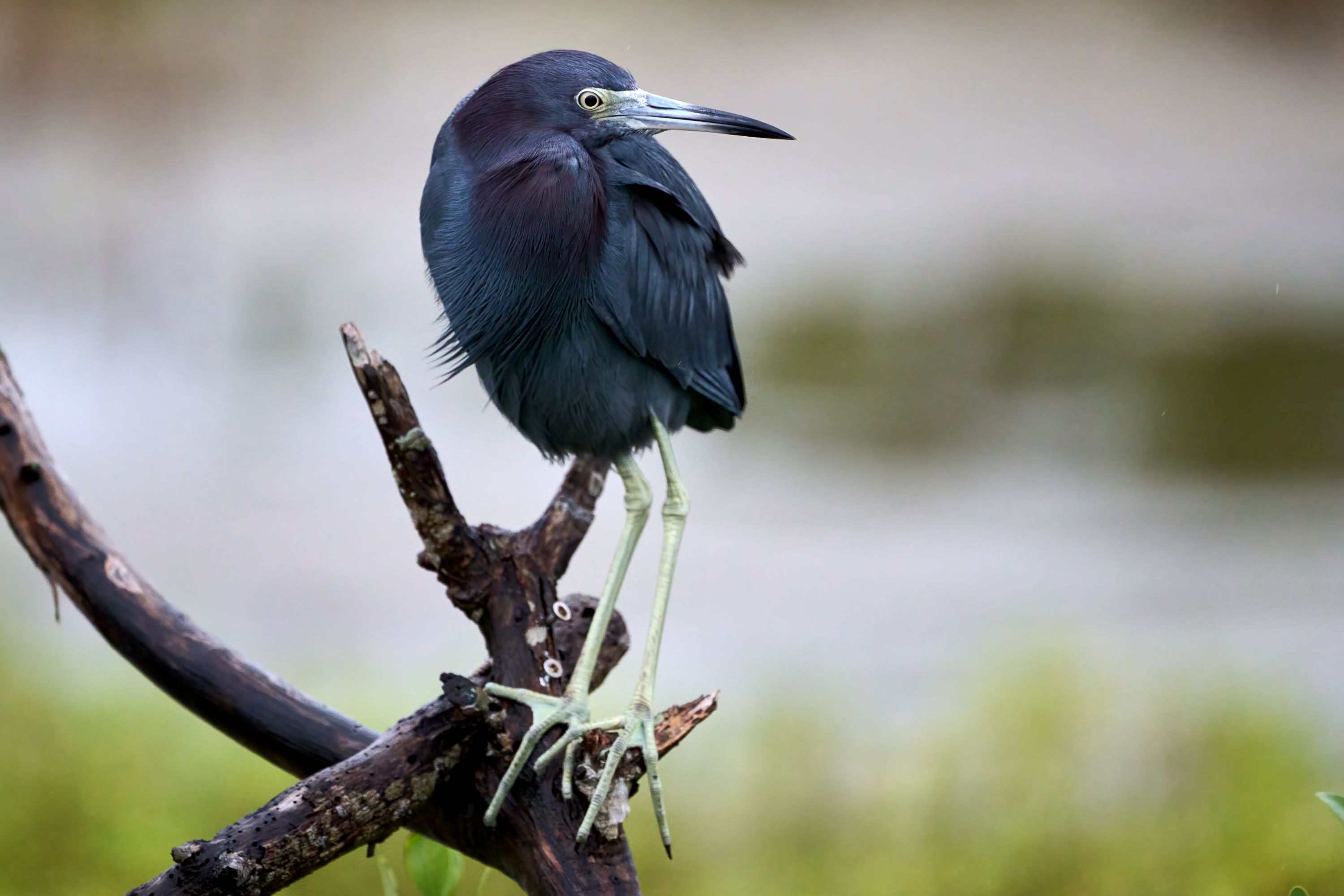
The Little Blue Heron: The Subtle Beauty of Wetlands
Introduction to the Little Blue Heron
The Little Blue Heron, Egretta caerulea, is a small heron known for its striking, slate-blue plumage and graceful demeanor. A member of the heron family, Ardeidae, this bird is a vibrant presence in the wetlands of the Americas.
Physical Description
Adult Little Blue Herons exhibit a rich, blue-gray color with a purple-maroon head and neck. They are medium-sized herons, standing about 60-70 cm tall, with a wingspan of approximately 100 cm. Juveniles start out white and gradually acquire the blue plumage as they mature, creating a distinctive look among young birds.
Habitat and Distribution
This species is commonly found in marshes, swamps, and along the edges of lakes and rivers across the southeastern United States, Central America, the Caribbean, and South America. Their habitat choice reflects their preference for shallow waters rich in aquatic life.
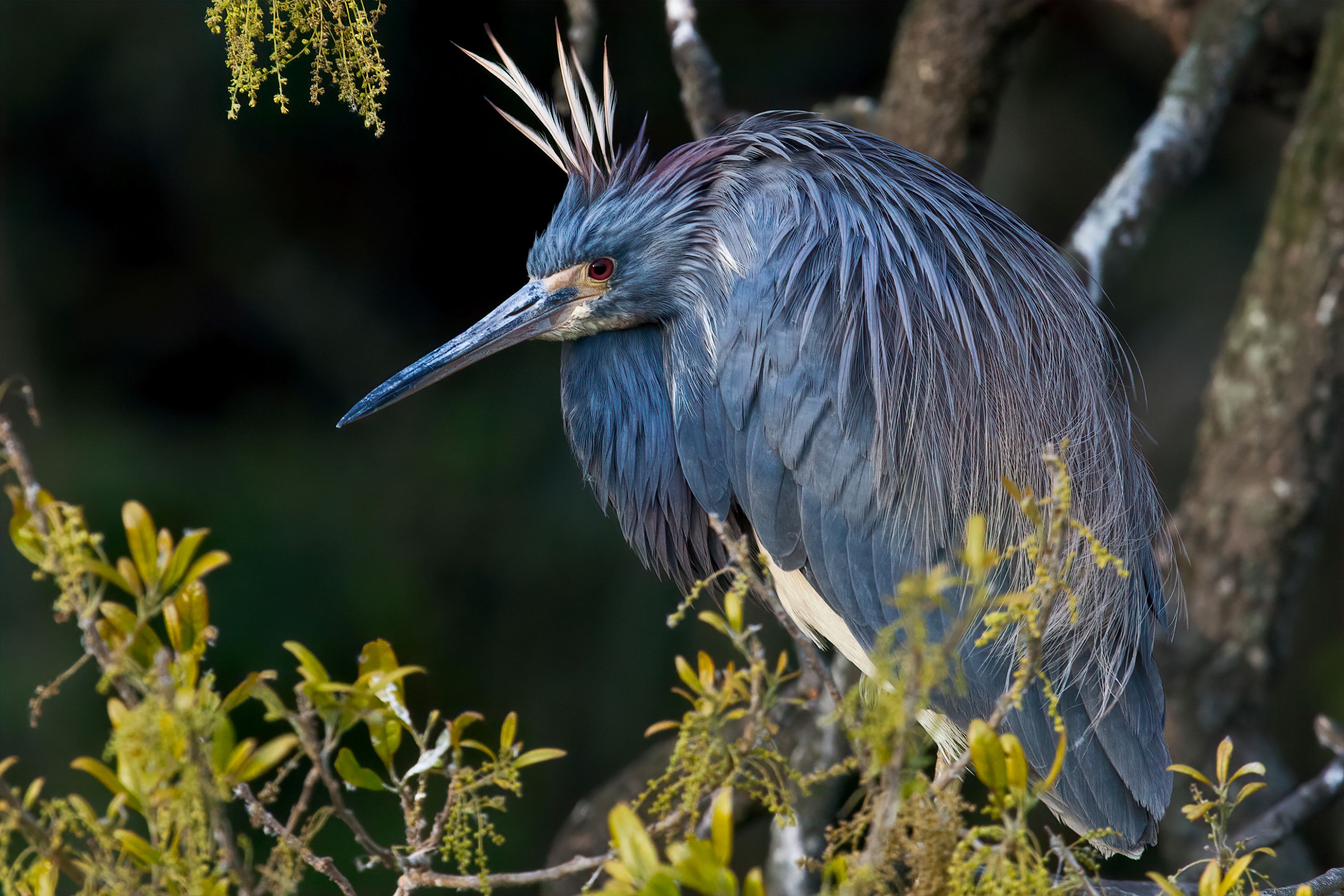
Behavior and Lifestyle
Little Blue Herons are solitary feeders but may be seen in small groups or with other wading birds. They are less social compared to some heron species, preferring to hunt and live in the quieter corners of their habitat.
Feeding Habits
Their diet consists primarily of small fish, amphibians, crustaceans, and insects. They forage by wading in shallow water, using their sharp bills to catch prey with swift accuracy.
Breeding and Nesting Habits
The breeding season of the Little Blue Heron varies by location but typically occurs in spring and summer. They nest in colonies, often with other heron and egret species. The nests are constructed in trees or shrubs near water, made of sticks and lined with softer materials.
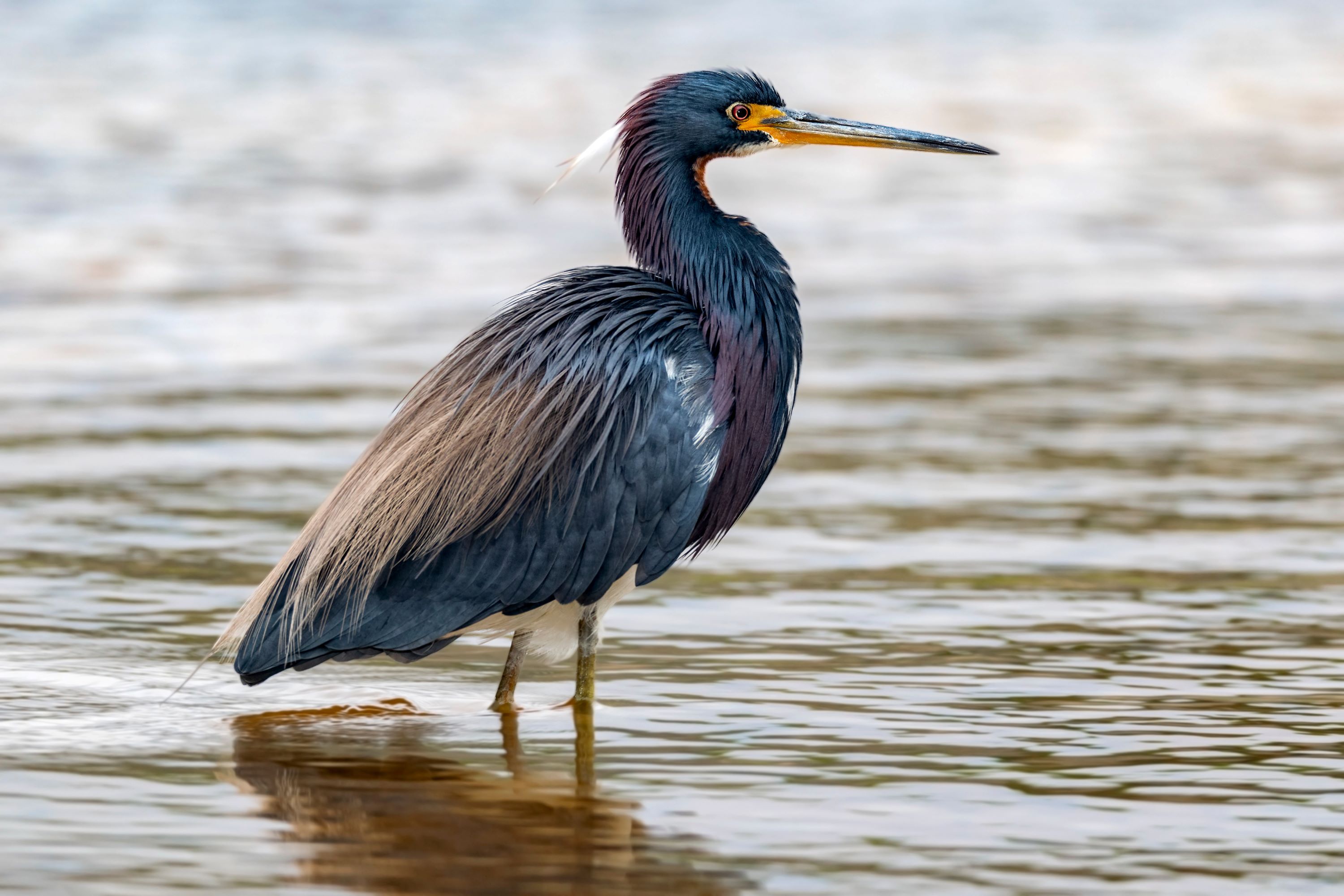
Egg Laying and Incubation
Females lay 3 to 5 pale blue-green eggs. Both parents participate in the incubation process, which lasts about 22 to 24 days. The nests' height and location help protect the eggs and chicks from predators.
Chick Rearing and Parental Care
The chicks are born altricial and require significant parental care. Both parents feed the chicks by regurgitation. Young herons fledge at about 7 to 8 weeks of age but may remain near the nest for continued care.
Vocalizations and Communication
While the Little Blue Heron is generally quiet, it can produce a range of sounds, particularly during the breeding season. These include soft croaks and clucks used for communication within the colony and with mates.
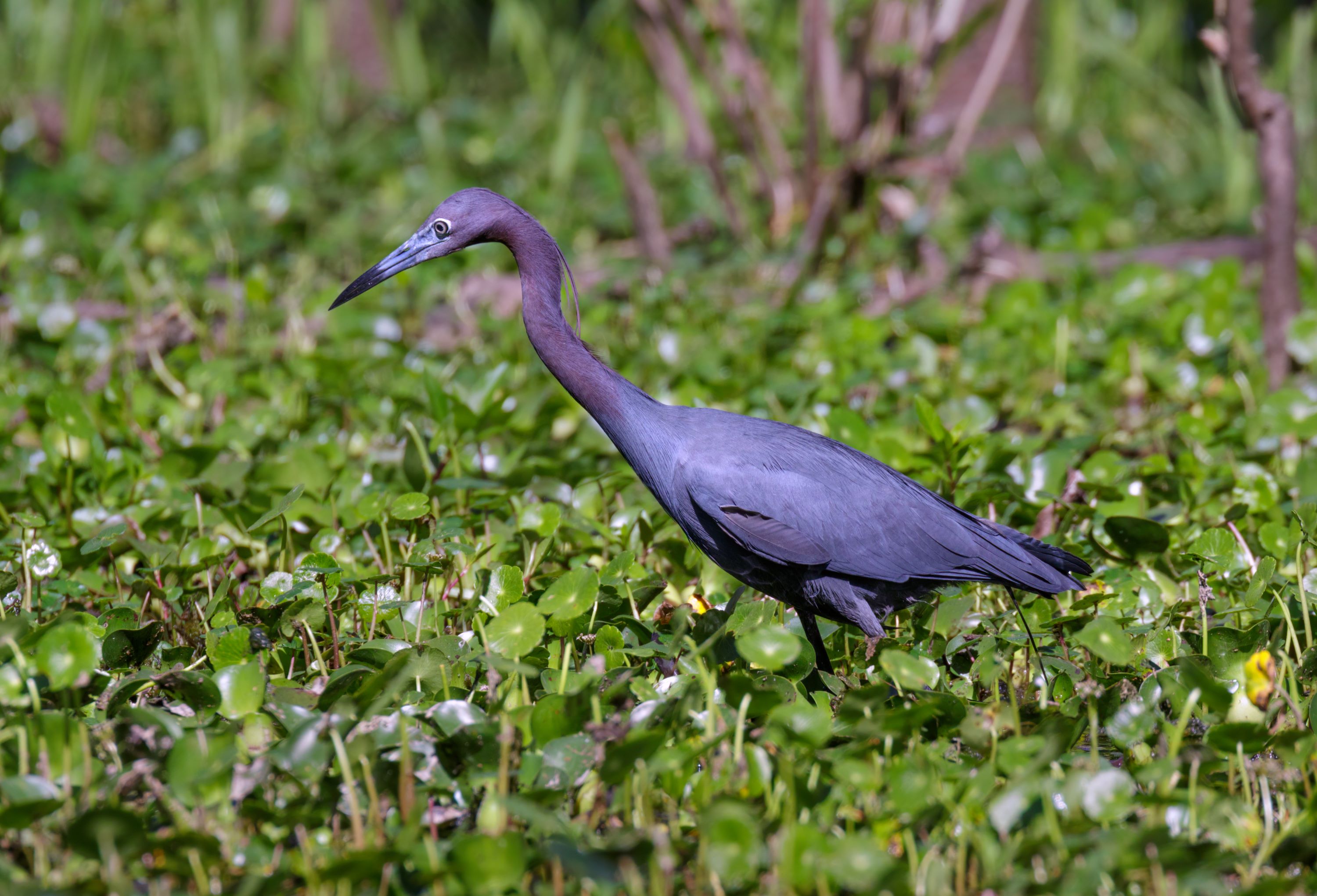
Conservation Status
The Little Blue Heron is currently listed as Least Concern by the IUCN. However, it faces threats from wetland habitat loss and degradation in some areas of its range.
Similar Species and Taxonomy
Part of the order Pelecaniformes, the Little Blue Heron is closely related to other species in the Egretta genus, such as the Snowy Egret and the Reddish Egret. It is distinguishable by its unique blue coloring and smaller size.
The Little Blue Heron in Utah
While the Little Blue Heron's primary range is in the southeastern United States and tropical regions, occasional sightings have occurred in Utah. In Utah, these herons are more likely to be found during migration in wetland areas.
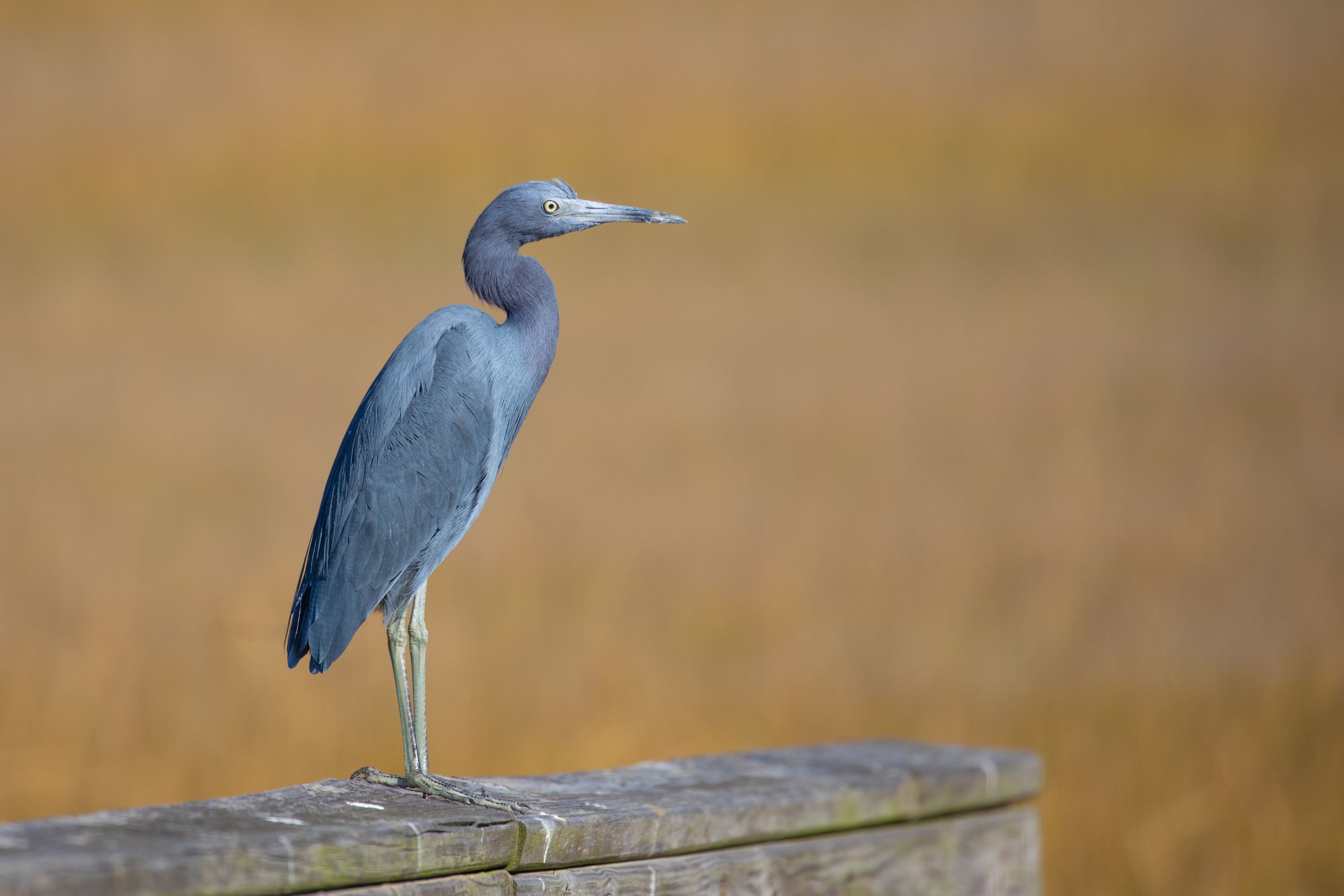
Conclusion
The Little Blue Heron, Egretta caerulea, is an exquisite example of the diversity within the heron family. Its presence in the wetlands and waterways of the Americas not only adds beauty to these ecosystems but also serves as an indicator of their health. Protecting the habitats of the Little Blue Heron is essential for the preservation of these vital ecosystems and the rich biodiversity they support.